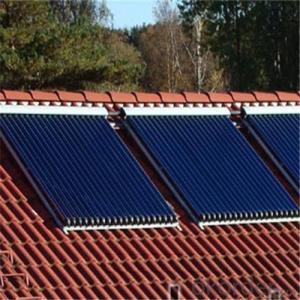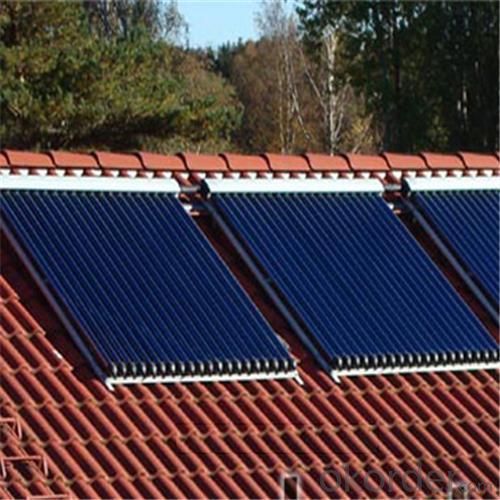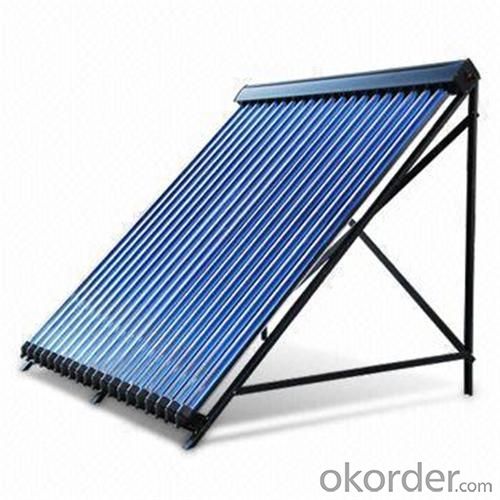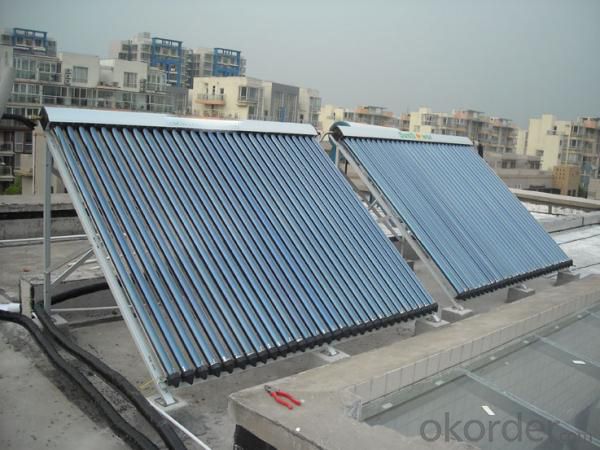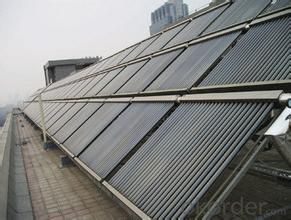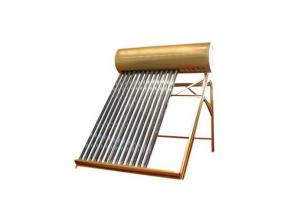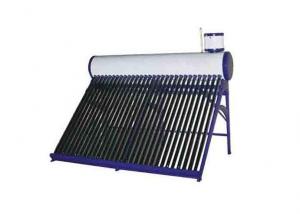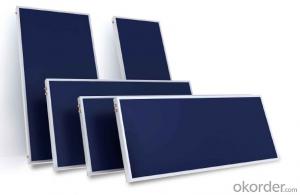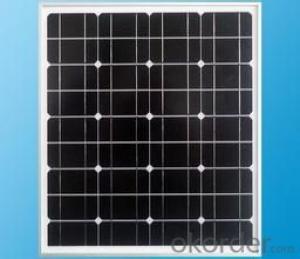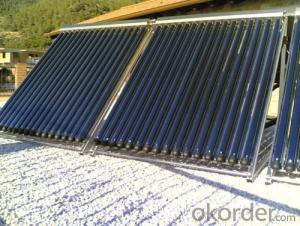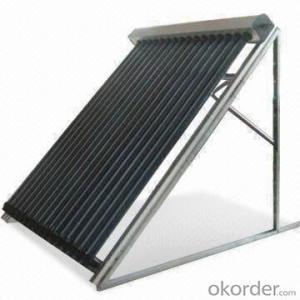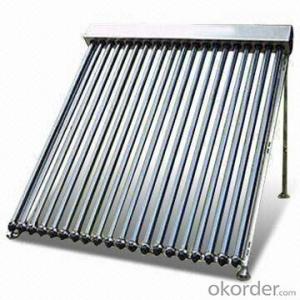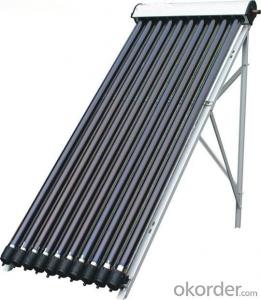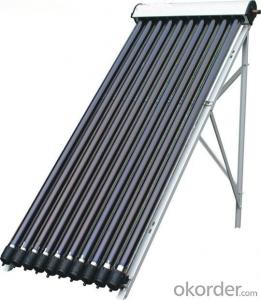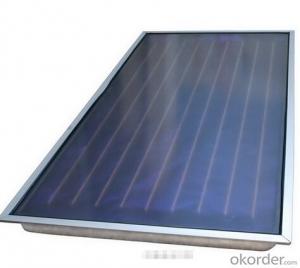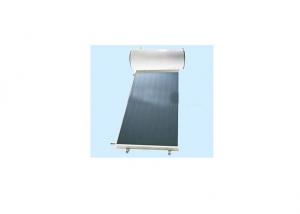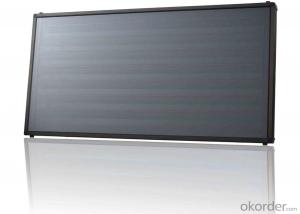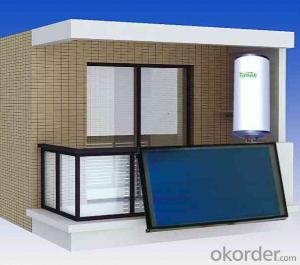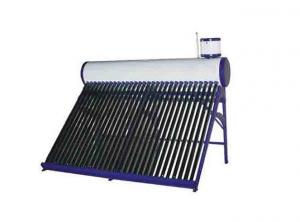Advanced Solar Collectors - Heat Pipe Vacuum Tubes for Rooftops
- Loading Port:
- China main port
- Payment Terms:
- TT OR LC
- Min Order Qty:
- 5 set
- Supply Capability:
- 10000 set/month
OKorder Service Pledge
OKorder Financial Service
You Might Also Like
Specifications
manifold (inner) | red copper |
manifold (exterior) | aluminum alloy |
glass tube dimensions | 58mm * 1800mm |
daily efficiency | ≥55% |
heat preservation | 72 hours |
hail resistance | 25mm |
max pressure | 7 bar |
coating of vacuum tube | ALN/AIN-SS/CU |
heat pipe | anti-freezing > -35 degree |
certificate | Solar Keymark, EN12975,SRCC |
Serious Product
Models | L*W*H mm | Vacuum tube | Power output | Efficiency | Header mm | Frame | container loading 20FT/40HQ sets | Gross Weight kg |
SHC-8 | 1917*910*133 | 58*1800*8pcs | 939W | 0.668 | Φ35/1.0 | AL alloy | 185/445 | 27 |
SHC-10 | 1917*1130*133 | 58*1800*10pcs | 1189W | 159/385 | 33 | |||
SHC-12 | 1917*1350*133 | 58*1800*12pcs | 1440W | 149/358 | 40 | |||
SHC-15 | 1917*1680*133 | 58*1800*15pcs | 1815W | 120/290 | 49 | |||
SHC-18 | 1917*2010*133 | 58*1800*18pcs | 2191W | 100/242 | 59 | |||
SHC-20 | 1917*2230*133 | 58*1800*20pcs | 2442W | 87/210 | 66 | |||
SHC-22 | 1917*2450*133 | 58*1800*22pcs | 2692W | 83/202 | 72 | |||
SHC-24 | 1917*2670*133 | 58*1800*24pcs | 2943W | 77/188 | 79 |
Packaging & Delivery
Packaging Details: | Exporting Carton with big foaming protection |
Delivery Detail: | In 10-15 days |
Loading Quantity
Model | Tube | Tube Q.T.Y | Loading Q.T.Y/40HQ |
GSC15 | 58*1800mm | 15pcs | 315sets |
GSC18 | 58*1800mm | 18pcs | 265sets |
GSC20 | 58*1800mm | 20pcs | 248sets |
GSC22 | 58*1800mm | 22pcs | 225sets |
GSC25 | 58*1800mm | 25pcs | 200sets |
GSC30 | 58*1800mm | 30pcs | 168sets |
Principle of solar collector:
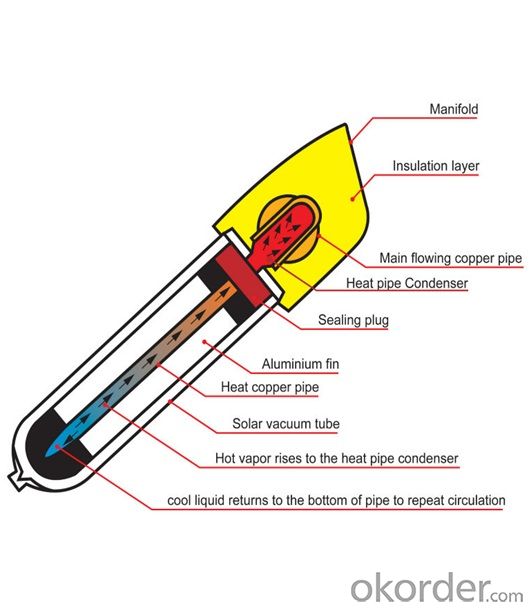
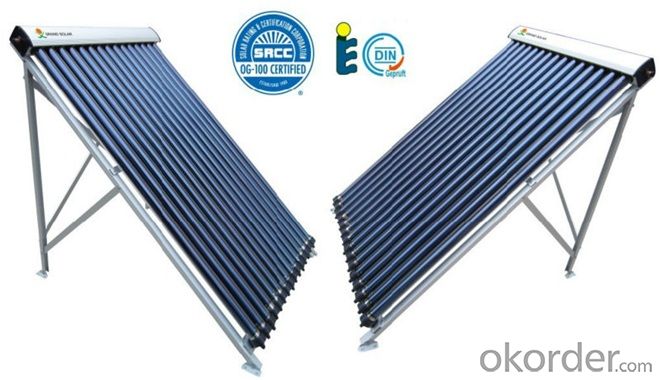
Solar collector details
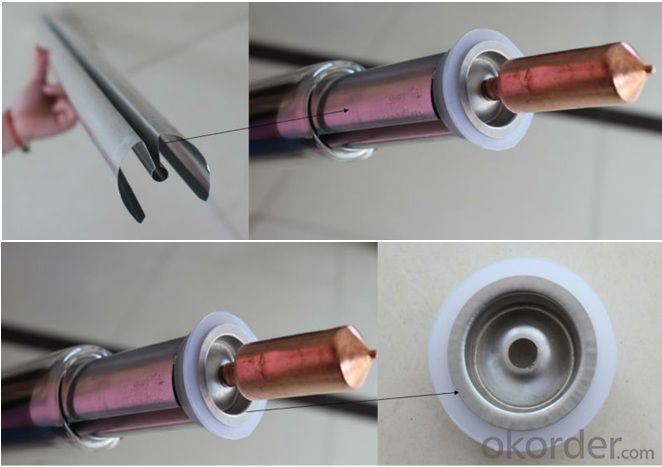
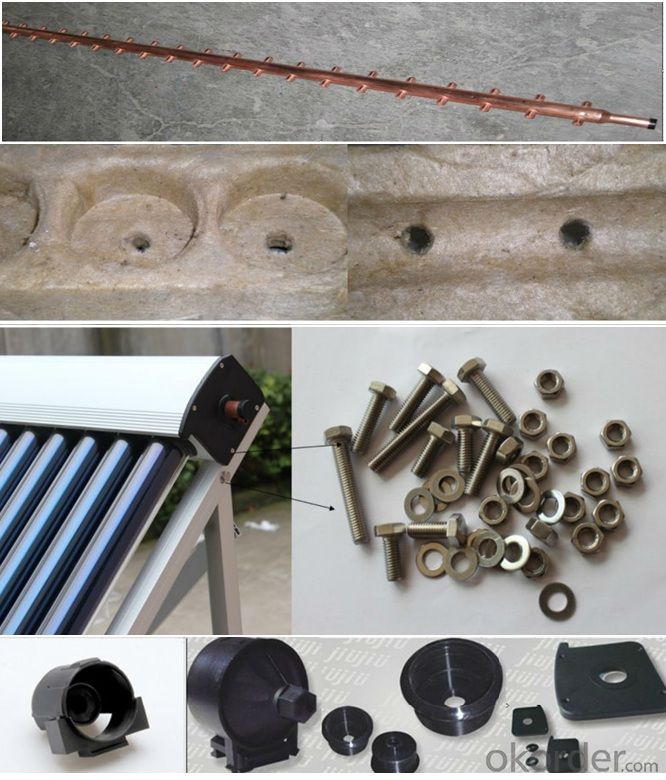
- Q: Can solar collectors be used in combination with wastewater treatment systems?
- Yes, solar collectors can be used in combination with wastewater treatment systems. Solar collectors can be used to generate heat or electricity, which can be utilized in various stages of wastewater treatment processes. For example, solar thermal collectors can be used to heat the water in the treatment system, aiding in the removal of contaminants. Additionally, solar photovoltaic systems can be employed to generate electricity for powering the treatment facilities, making the process more sustainable and reducing reliance on traditional energy sources.
- Q: Can solar collectors be used for heating swimming pools in warm climates?
- Yes, solar collectors can definitely be used for heating swimming pools in warm climates. The abundant sunlight in warm climates makes solar energy an excellent and efficient option for heating pool water. Solar collectors capture the sun's energy and transfer it to the pool water, providing a cost-effective and environmentally friendly solution for pool heating in these regions.
- Q: Are there any restrictions or regulations for installing solar collectors in certain areas?
- Yes, there may be certain restrictions or regulations for installing solar collectors in certain areas. These restrictions can vary depending on the location and local laws. Some common factors that may impact the installation of solar collectors include building codes, zoning regulations, homeowner association rules, and historic preservation requirements. Additionally, certain areas may have specific guidelines for the placement, size, and design of solar collectors to ensure they comply with aesthetic and safety standards. It is advisable to consult with local authorities or a solar installation professional to understand the specific restrictions and regulations applicable to your area.
- Q: Can solar collectors be used for heating swimming pools?
- Yes, solar collectors can indeed be used for heating swimming pools. Solar collectors, such as solar thermal panels or solar blankets, can harness the sun's energy to heat the water in the swimming pool. This eco-friendly and cost-effective method is commonly employed to raise the temperature of swimming pool water and extend the swimming season.
- Q: Can solar collectors be used in disaster-resilient infrastructure?
- Yes, solar collectors can be used in disaster-resilient infrastructure. By harnessing the power of the sun, solar collectors can provide a reliable and sustainable source of energy for critical systems such as lighting, communication devices, water purification, and emergency medical equipment. This helps ensure that essential services remain operational during and after disasters, reducing dependence on traditional energy sources and improving overall resilience. Additionally, solar collectors are often easier to repair and maintain compared to conventional power systems, making them an ideal choice for disaster-prone areas.
- Q: Can solar collectors be used for heating oil refineries?
- Yes, solar collectors can be used for heating oil refineries. Solar thermal technology can provide heat for various industrial processes, including oil refineries. Solar collectors capture sunlight and convert it into thermal energy, which can be used to generate steam or heat fluids. This renewable energy source can help reduce the reliance on fossil fuels and lower operating costs for oil refineries while reducing their carbon footprint.
- Q: What is the impact of temperature on solar collector efficiency?
- The impact of temperature on solar collector efficiency is significant. As temperature increases, the efficiency of solar collectors tends to decrease. This is due to the fact that as the temperature rises, the heat loss from the collector also increases. Higher temperatures can lead to increased thermal losses, reduced heat transfer, and reduced overall efficiency of the system. Therefore, it is important to consider and manage temperature effects when designing and operating solar collector systems to maximize their efficiency and performance.
- Q: Are there any issues with overheating in solar collector systems?
- Yes, overheating can be a potential issue in solar collector systems. When solar collectors absorb excessive heat, it can lead to system inefficiency, reduced lifespan of components, and even potential damage. To prevent overheating, various techniques such as thermal insulation, heat dissipation mechanisms, and temperature control systems are implemented in solar collector designs.
- Q: Can solar collectors be used in areas with limited access to materials?
- Yes, solar collectors can be used in areas with limited access to materials. Solar collectors can be designed using simple and easily available materials such as glass, metal, and plastic. Additionally, there are various types of solar collectors available, ranging from low-tech options like solar water heaters to more advanced photovoltaic panels. Therefore, even in areas with limited resources, solar collectors can still be utilized to harness clean and renewable energy from the sun.
- Q: Can solar collectors generate electricity?
- Yes, solar collectors can generate electricity.
Send your message to us
Advanced Solar Collectors - Heat Pipe Vacuum Tubes for Rooftops
- Loading Port:
- China main port
- Payment Terms:
- TT OR LC
- Min Order Qty:
- 5 set
- Supply Capability:
- 10000 set/month
OKorder Service Pledge
OKorder Financial Service
Similar products
Hot products
Hot Searches
Related keywords
